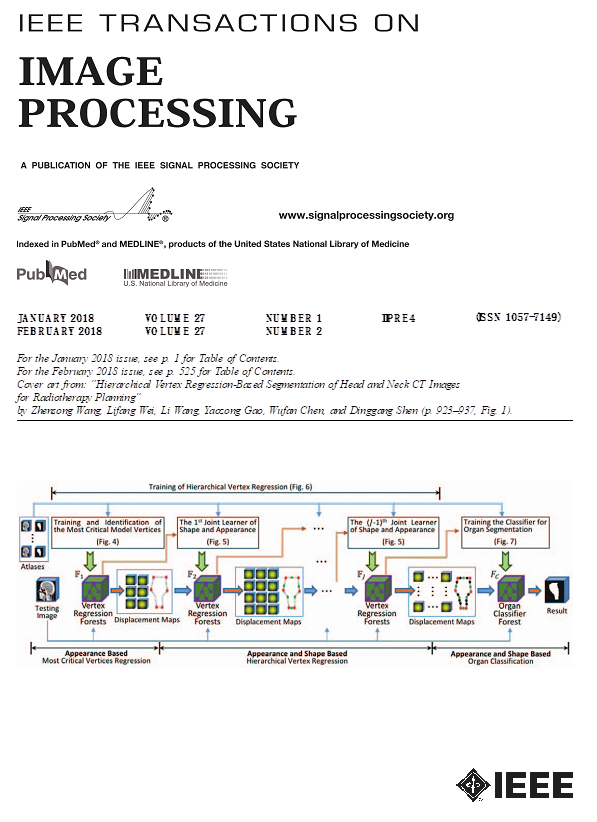基于多注意机制的简化双四元数双分支训练u -网络。
IF 13.7
1区 计算机科学
Q1 COMPUTER SCIENCE, ARTIFICIAL INTELLIGENCE
引用次数: 0
摘要
作为许多面向视觉任务的先决条件,图像脱除是缓解雨天这些任务性能下降的有效解决方案。近年来,深度学习的引入在培训技术方面取得了重大进展。然而,由于合成数据集的固有约束和网络架构设计的鲁棒性不足,大多数现有方法难以拟合各种降雨模式,也难以适应从合成降雨图像到真实降雨图像的过渡,最终导致恢复效果不理想。为了解决这些问题,我们提出了一个简化的双四元数双分支脱训练u网络(RQ-D2UNet),以获得更好的脱训练性能,这是首次尝试将简化的双四元数神经网络应用于脱训练任务。简化四元数(RQ)的代数特性可以在保留背景图像底层空间结构的同时,更准确地建模雨伪影。u型建筑和双分支结构的综合设计方案可以提取多尺度的文脉信息,充分挖掘雨与无雨特征之间的混合关联。此外,我们还扩展了RQ域中的自注意和卷积注意机制,使所提出的模型能够平衡全局依赖捕获和局部特征提取。在各种降雨数据集(如雨带/雨霾/雨滴/真雨)、下游视觉应用(如目标检测和分割)以及类似的图像恢复任务(如图像下雪和低光图像增强)上的大量实验结果证明了我们提出的方法的优越性和多功能性。本文章由计算机程序翻译,如有差异,请以英文原文为准。
Reduced Biquaternion Dual-Branch Deraining U-Network via Multi-Attention Mechanism.
As a prerequisite for many vision-oriented tasks, image deraining is an effective solution to alleviate performance degradation of these tasks on rainy days. In recent years, the introduction of deep learning has obtained the significant developments in deraining techniques. However, due to the inherent constraints of synthetic datasets and the insufficient robustness of network architecture designs, most existing methods are difficult to fit varied rain patterns and adapt to the transition from synthetic rainy images to real ones, ultimately resulting in unsatisfactory restoration outcomes. To address these issues, we propose a reduced biquaternion dual-branch deraining U-Network (RQ-D2UNet) for better deraining performance, which is the first attempt to apply the reduced biquaternion-valued neural network in the deraining task. The algebraic properties of reduced biquaternion (RQ) can facilitate modeling the rainy artifacts more accurately while preserving the underlying spatial structure of the background image. The comprehensive design scheme of U-shaped architecture and dual-branch structure can extract multi-scale contextual information and fully explore the mixed correlation between rain and rain-free features. Moreover, we also extend the self-attention and convolutional attention mechanisms in the RQ domain, which allow the proposed model to balance both global dependency capture and local feature extraction. Extensive experimental results on various rainy datasets (i.e., rain streak/rain-haze/raindrop/real rain), downstream vision applications (i.e., object detection and segmentation), and similar image restoration tasks (i.e., image desnowing and low-light image enhancement) demonstrate the superiority and versatility of our proposed method.
求助全文
通过发布文献求助,成功后即可免费获取论文全文。
去求助
来源期刊

IEEE Transactions on Image Processing
工程技术-工程:电子与电气
CiteScore
20.90
自引率
6.60%
发文量
774
审稿时长
7.6 months
期刊介绍:
The IEEE Transactions on Image Processing delves into groundbreaking theories, algorithms, and structures concerning the generation, acquisition, manipulation, transmission, scrutiny, and presentation of images, video, and multidimensional signals across diverse applications. Topics span mathematical, statistical, and perceptual aspects, encompassing modeling, representation, formation, coding, filtering, enhancement, restoration, rendering, halftoning, search, and analysis of images, video, and multidimensional signals. Pertinent applications range from image and video communications to electronic imaging, biomedical imaging, image and video systems, and remote sensing.
 求助内容:
求助内容: 应助结果提醒方式:
应助结果提醒方式:


